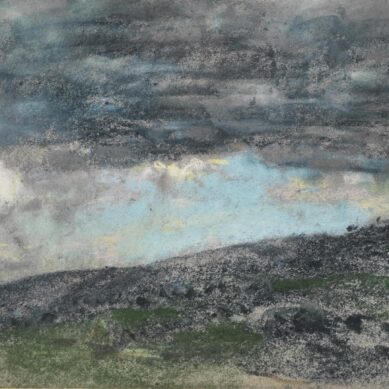You searched
Painter, Sculptor
Antonietta Raphael Mafai
Are you interested in the sales or the purchase of his artworks?
We buy works of this artist
and of other painters and sculptors from the 16th century to the first half of the 20th century
The Berardi gallery offers a free and without obligation service for evaluation of ancient and modern art . To find your way in the art market, very complex and full of nuances, it is better to rely on a professional consultant who can answer fast and concretely to your needs. The clarity of the answers will resolve effectively the need to estimate or sell an asset.
Contact us immediately without commitment
Answers also in 24 hours:
Antonietta Raphael Mafai
Antonietta Raphael Mafai
Antoinette Raphaël Mafai was born in Kovno, a village near Vilnius, in 1895. The daughter of a rabbi, when her father died, she moved with her mother to London in 1903 and attended the Royal Academy, graduating in piano. She then settled briefly in Paris and in 1925 went to Rome where she undertook studies at the Academy of Fine Arts. In the Roman environment he met Mario Mafai, whom he married in 1935, and in these years his stimulating artistic research began.
The school on Via Cavour
In 1927 they go to live together in the house on Via Cavour where the famous association between the painter, Mafai, Scipione and Mazzacurati, known as the “School of Via Cavour,” will take place, even though it has very little of “school”. Each of them, in fact, follows different and heterogeneous research, however, in the common sign of aversion to the twentieth-century instances of a return to order. Antoinette is a “scapigliata” artist; her works are characterized by an expressive and chromatic charge with a European flavor. Examples are Self-Portrait with Violin and Still Life with Guitar from 1928.
In 1929 he participated in his first exhibition, on the occasion of the Exhibition of the Fascist Union of Lazio with the work Landscape; and at the Bragaglia Gallery he exhibited Autoritratto. Also in the same year she was present at the group show “eight Roman women painters and sculptors” at the Camerata degli Artisti in Piazza di Spagna.
Primitive and expressionist suggestions: from painting to sculpture
In 1930 he left with Mafai for Paris, where he would stay for about four years, except for a few months he spent between Rome and London. In the Ville Lumière he came into contact with Giorgio de Chirico, his brother Savinio and Chagall, who showed great interest in the Lithuanian artist’s painting. In London, on the other hand, she meets Jacob Epstein, a sculptor influenced by African art and primitivism, who brings her closer to sculptural practice and will condition her plastic research aimed at dynamism and strong expressive intensity. At the end of 1933 they returned permanently to Rome, settling in Piazza Indipendenza. During this period she chose to devote herself almost entirely to sculpture, also to detach herself from a pictorial confrontation with her husband, often going to Ettore Colla’s studio in Castro Pretorio. She transferred to sculpture the primitivism and anarchic style protagonist of her paintings, linking it, however, to the strong plastic simplifications implemented by Epstein.
In 1935 he took part in the creation of the fresco Trionfo di Cesare (Triumph of Caesar) together with Mafai, Ziveri and Mazzacurati at the Palazzo del Littorio in Rome, which was, however, to be faded a few years later for political reasons. In 1937 he was also present at the Mostra del Sindacato fascista del Lazio with the work Composition.
The new escape from Rome and the trip to China
The artist, being of Jewish origin, decided to leave for Genoa in 1939 in an attempt to escape the racial laws, while Mafai was called to arms. His exhibition activity obviously suffers a hiatus during the years of the conflict. The Mafai family returned to Rome in 1943, and thanks to the intercession of Mino Maccari, Antonietta Raphaël obtained a room at the Academy where she returned to work on pictorial and sculptural pieces. Two years later we find her again in Genoa and then in 1952 again in Rome where an anthological exhibition is organized at the Galleria dello Zodiaco. These are years in which her artistic research is aimed primarily at sculptural art. In 1956 he left for China together with other artists such as Giulio Turcato, Agenore Fabbri and Aligi Sassu, and exhibited in Beijing and in other collective exhibitions in Asian lands. Fruit of this experience is the 1956 sculpture Maternità cinese (Chinese Motherhood) or the 1967 painting Ragazzo cinese (Chinese Boy).
Participation in the Venice Biennials and his last years of activity
From 1948 he was present at the Venice Biennials and participated in this edition with the work The Three Sisters, a sculpture dedicated to his three daughters. Miriam, Simona and Giulia are represented naked, standing and with their eyes closed, recalling the topos of the votive statue and primitive sculpture.
In 1950 he took part in the next edition of the Biennale with the three sculptures Figura di donna, Fuga da Sodoma and Toro morente. In 1952 he exhibited the three plaster casts Man with a Cat (Mafai), Sleeping Miriam and Portrait of Lordship Scalia. His last participation in the Venice Biennale is attested to 1954 with Adolescent, Simona, The pensive and Bracciante.
In the 1960s he continued to work on both sculptural and pictorial works, also devoting himself to religious themes such as The Canticle of Canticles and The Lamentations of Job. In 1965 Mafai, his lifelong companion, passed away, and he dedicated a large canvas to him entitled Homage to Mafai. In his last years he worked on two colossal paintings Homage to Picasso and Great Concert on Lake Vico. He died in Rome in 1975.
Emanuela Di Vivona





